15.2 Conductors and Insulators
Learning Objectives
By the end of this section, you will be able to:
- Define conductor and insulator, explain the difference, and give examples of each.
- Describe three methods for charging an object.
- Explain what happens to an electric force as you move farther from the source.
- Define polarization.
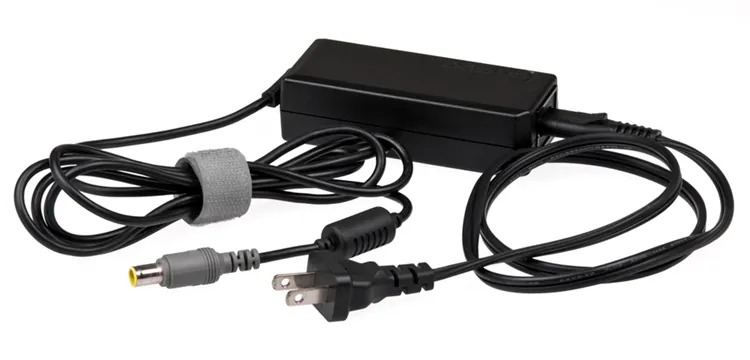
Some substances, such as metals and salty water, allow charges to move through them with relative ease. Some of the electrons in metals and similar conductors are not bound to individual atoms or sites in the material. These free electrons can move through the material much as air moves through loose sand. Any substance that has free electrons and allows charge to move relatively freely through it is called a conductor. The moving electrons may collide with fixed atoms and molecules, losing some energy, but they can move in a conductor. Superconductors allow the movement of charge without any loss of energy. Salty water and other similar conducting materials contain free ions that can move through them. An ion is an atom or molecule having a positive or negative (nonzero) total charge. In other words, the total number of electrons is not equal to the total number of protons.
Other substances, such as glass, do not allow charges to move through them. These are called insulators. Electrons and ions in insulators are bound in the structure and cannot move easily—as much as [latex]\text{10}^{\text{23}}[/latex] times more slowly than in conductors. Pure water and dry table salt are insulators, for example, whereas molten salt and salty water are conductors.
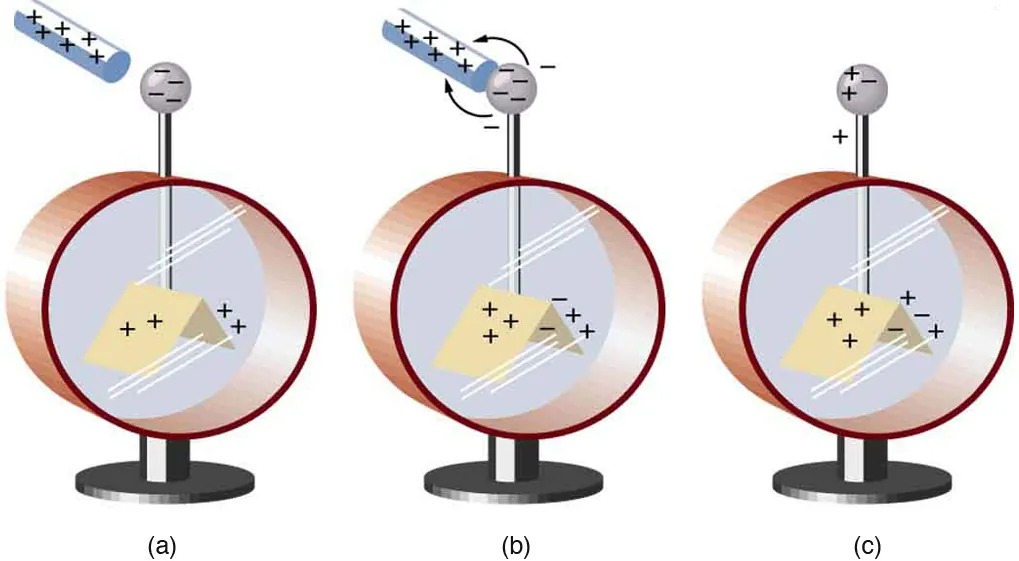
Figure 15.11 An electroscope is a favorite instrument in physics demonstrations and student laboratories. It is typically made with gold foil leaves hung from a (conducting) metal stem and is insulated from the room air in a glass-walled container. (a) A positively charged glass rod is brought near the tip of the electroscope, attracting electrons to the top and leaving a net positive charge on the leaves. Like charges in the light flexible gold leaves repel, separating them. (b) When the rod is touched against the ball, electrons are attracted and transferred, reducing the net charge on the glass rod but leaving the electroscope positively charged. (c) The excess charges are evenly distributed in the stem and leaves of the electroscope once the glass rod is removed. Image from OpenStax College Physics 2e, CC-BY 4.0
Image Description
The image consists of three diagrams labeled (a), (b), and (c), each illustrating the process of charging a gold leaf electroscope through induction:
(a) An electroscope with a glass dome covering a metal rod. Inside, a gold leaf is attached to the rod. A charged rod with positive and negative symbols approaches from the left, showing the presence of positive charge (labeled with plus signs) near the electroscope.
(b) The charged rod is closer to the metal ball on top of the electroscope, inducing a negative charge on the side of the metal ball closest to the rod, shown with negative symbols. This causes the gold leaves to repel as indicated by the plus symbols on both leaves inside the dome.
(c) The charged rod is removed, and the electroscope remains charged. A positive charge is seen on the electroscope ball, and the gold leaves remain spread, indicating the presence of some charges, shown by plus and minus symbols inside the dome.
Charging by Contact
Figure 15.11 shows an electroscope being charged by touching it with a positively charged glass rod. Because the glass rod is an insulator, it must actually touch the electroscope to transfer charge to or from it. (Note that the extra positive charges reside on the surface of the glass rod as a result of rubbing it with silk before starting the experiment.) Since only electrons move in metals, we see that they are attracted to the top of the electroscope. There, some are transferred to the positive rod by touch, leaving the electroscope with a net positive charge.
Electrostatic repulsion in the leaves of the charged electroscope separates them. The electrostatic force has a horizontal component that results in the leaves moving apart as well as a vertical component that is balanced by the gravitational force. Similarly, the electroscope can be negatively charged by contact with a negatively charged object.
Charging by Induction
It is not necessary to transfer excess charge directly to an object in order to charge it. Figure 15.12 shows a method of induction wherein a charge is created in a nearby object, without direct contact. Here we see two neutral metal spheres in contact with one another but insulated from the rest of the world. A positively charged rod is brought near one of them, attracting negative charge to that side, leaving the other sphere positively charged.
This is an example of induced polarization of neutral objects. Polarization is the separation of charges in an object that remains neutral. If the spheres are now separated (before the rod is pulled away), each sphere will have a net charge. Note that the object closest to the charged rod receives an opposite charge when charged by induction. Note also that no charge is removed from the charged rod, so that this process can be repeated without depleting the supply of excess charge.
Another method of charging by induction is shown in Figure 15.13. The neutral metal sphere is polarized when a charged rod is brought near it. The sphere is then grounded, meaning that a conducting wire is run from the sphere to the ground. Since the earth is large and most ground is a good conductor, it can supply or accept excess charge easily. In this case, electrons are attracted to the sphere through a wire called the ground wire, because it supplies a conducting path to the ground. The ground connection is broken before the charged rod is removed, leaving the sphere with an excess charge opposite to that of the rod. Again, an opposite charge is achieved when charging by induction and the charged rod loses none of its excess charge.
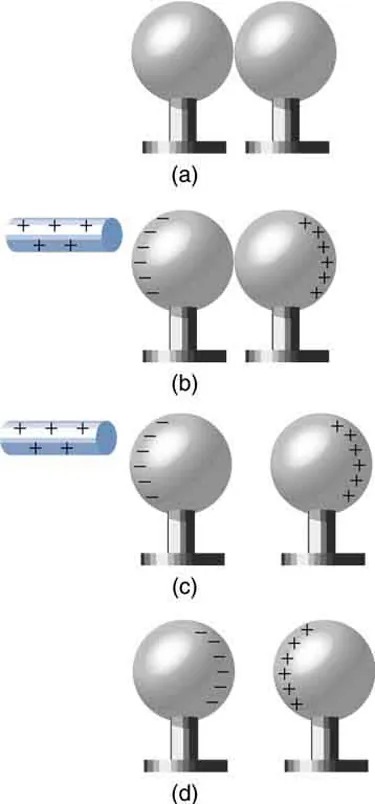
Figure 15.12 Charging by induction. (a) Two uncharged or neutral metal spheres are in contact with each other but insulated from the rest of the world. (b) A positively charged glass rod is brought near the sphere on the left, attracting negative charge and leaving the other sphere positively charged. (c) The spheres are separated before the rod is removed, thus separating negative and positive charge. (d) The spheres retain net charges after the inducing rod is removed—without ever having been touched by a charged object. Image from OpenStax College Physics 2e, CC-BY 4.0
Image Description
The image consists of four diagrams labeled (a) through (d), depicting the process of charging by induction using metallic spheres:
(a) Two metallic spheres are shown side by side, uncharged and neutral. They are identical with no markings.
(b) A cylindrical rod with positive charges (indicated by plus signs) approaches the left sphere. As a result, the left sphere shows negative charges on its outward side (indicated by minus signs), while the right sphere shows positive charges on its outward side (plus signs).
(c) The rod remains near the left sphere. The distribution of charges is consistent with the previous step: negative charges on the side of the left sphere and positive charges on the side of the right sphere.
(d) The rod is removed. Both spheres maintain their charge distribution: the left sphere has negative charges, and the right sphere has positive charges on the side facing the removed rod.
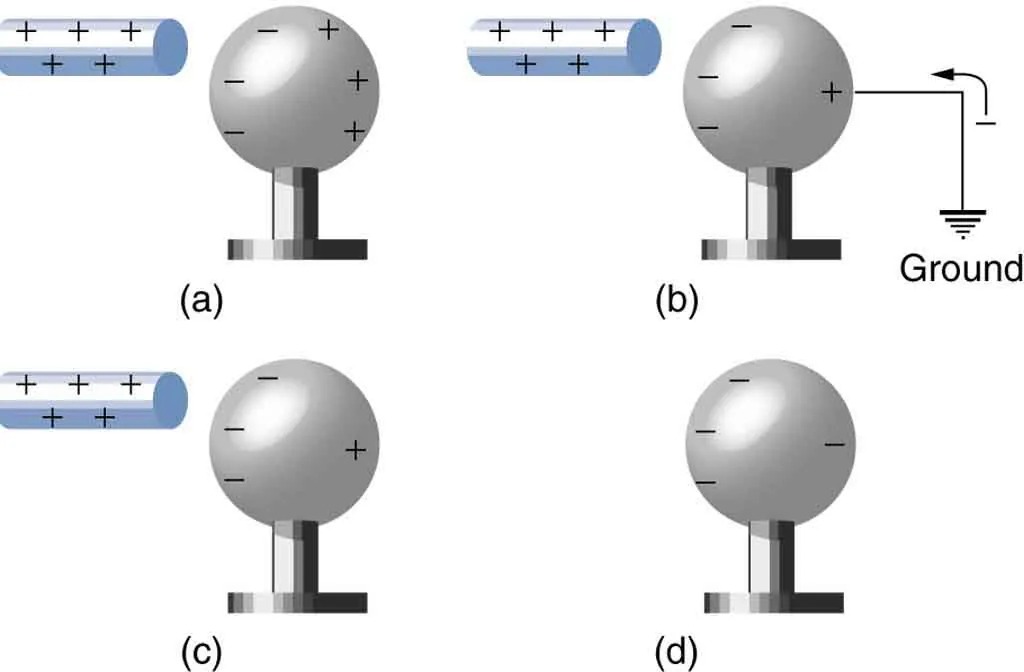
Figure 15.13 Charging by induction, using a ground connection. (a) A positively charged rod is brought near a neutral metal sphere, polarizing it. (b) The sphere is grounded, allowing electrons to be attracted from the earth’s ample supply. (c) The ground connection is broken. (d) The positive rod is removed, leaving the sphere with an induced negative charge. Image from OpenStax College Physics 2e, CC-BY 4.0
Image Description
This image consists of four diagrams labeled (a) to (d), illustrating the process of charging by induction using a metal sphere and a charged rod.
(a): A metal sphere is fixed on a stand. A charged rod with positive charges is shown close to the sphere on the left side. The sphere shows an uneven distribution of charges, with negative charges on the side closest to the rod and positive charges on the far side.
(b): The charged rod remains close to the sphere. A grounding wire is shown connecting the sphere to the ground, indicated by an arrow and a ground symbol. Negative charges remain near the rod, and some positive charges are shown being removed through the grounding wire.
(c): The grounding wire is removed. The charged rod is still close to the sphere, and the sphere has a distribution of charges with negative charges on the left near the rod and positive charges on the right.
(d): The charged rod is now removed from the vicinity of the sphere. The sphere retains a uniform distribution of negative charges, indicating it is left with a net negative charge after the rod’s removal.
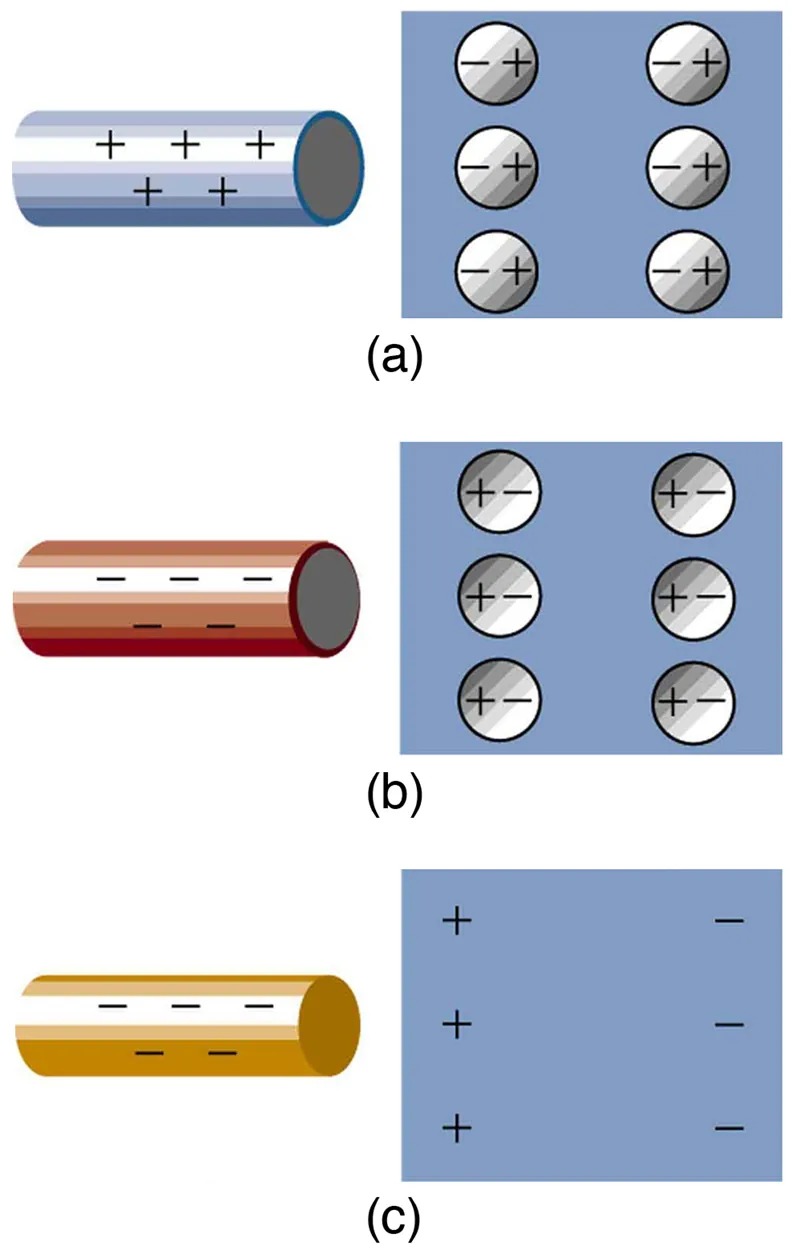
Figure 15.14 Both positive and negative objects attract a neutral object by polarizing its molecules. (a) A positive object brought near a neutral insulator polarizes its molecules. There is a slight shift in the distribution of the electrons orbiting the molecule, with unlike charges being brought nearer and like charges moved away. Since the electrostatic force decreases with distance, there is a net attraction. (b) A negative object produces the opposite polarization, but again attracts the neutral object. (c) The same effect occurs for a conductor; since the unlike charges are closer, there is a net attraction. Image from OpenStax College Physics 2e, CC-BY 4.0
Image Description
The image consists of three sections labeled (a), (b), and (c), each illustrating different arrangements of charges in cylinders and their surrounding environments.
- (a)
- On the left, there is a light blue cylindrical object with several positive signs along its surface, indicating positive charges.
- On the right, a blue square area contains six circles, each with a negative sign on the left and a positive sign on the right, symbolizing the presence of both negative and positive charges.
- (b)
- On the left, a brown cylindrical object with alternating positive and negative signs along its surface indicates a mix of positive and negative charges.
- On the right, a blue square area containing six circles, each with a positive sign on the left and a negative sign on the right, again showing both negative and positive charges within the circles.
- (c)
- On the left, a yellow cylindrical object has alternating positive and negative signs along its surface, similar to section (b).
- On the right, a blue square area contains three plus signs on the left and three minus signs on the right, indicating separated positive and negative charges.
Neutral objects can be attracted to any charged object. The pieces of straw attracted to polished amber are neutral, for example. If you run a plastic comb through your hair, the charged comb can pick up neutral pieces of paper. Figure 15.14 shows how the polarization of atoms and molecules in neutral objects results in their attraction to a charged object.
When a charged rod is brought near a neutral substance, an insulator in this case, the distribution of charge in atoms and molecules is shifted slightly. Opposite charge is attracted nearer the external charged rod, while like charge is repelled. Since the electrostatic force decreases with distance, the repulsion of like charges is weaker than the attraction of unlike charges, and so there is a net attraction. Thus a positively charged glass rod attracts neutral pieces of paper, as will a negatively charged rubber rod. Some molecules, like water, are polar molecules. Polar molecules have a natural or inherent separation of charge, although they are neutral overall. Polar molecules are particularly affected by other charged objects and show greater polarization effects than molecules with naturally uniform charge distributions.
Check Your Understanding
Can you explain the attraction of water to the charged rod in the figure below?
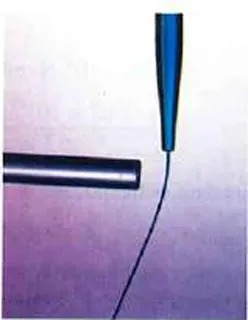
Figure 15.15 Image from OpenStax College Physics 2e, CC-BY 4.0
Click for Solution
Solution
Water molecules are polarized, giving them slightly positive and slightly negative sides. This makes water even more susceptible to a charged rod’s attraction. In addition, tap water contains dissolved ions (positive and negative charges). As the water flows downward, due to the force of gravity, the charged conductor exerts a net attraction to the opposite charges in the stream of water, pulling it closer.
PhET Explorations
John Travoltage
Make sparks fly with John Travoltage. Wiggle Johnnie’s foot and he picks up charges from the carpet. Bring his hand close to the door knob and get rid of the excess charge.

